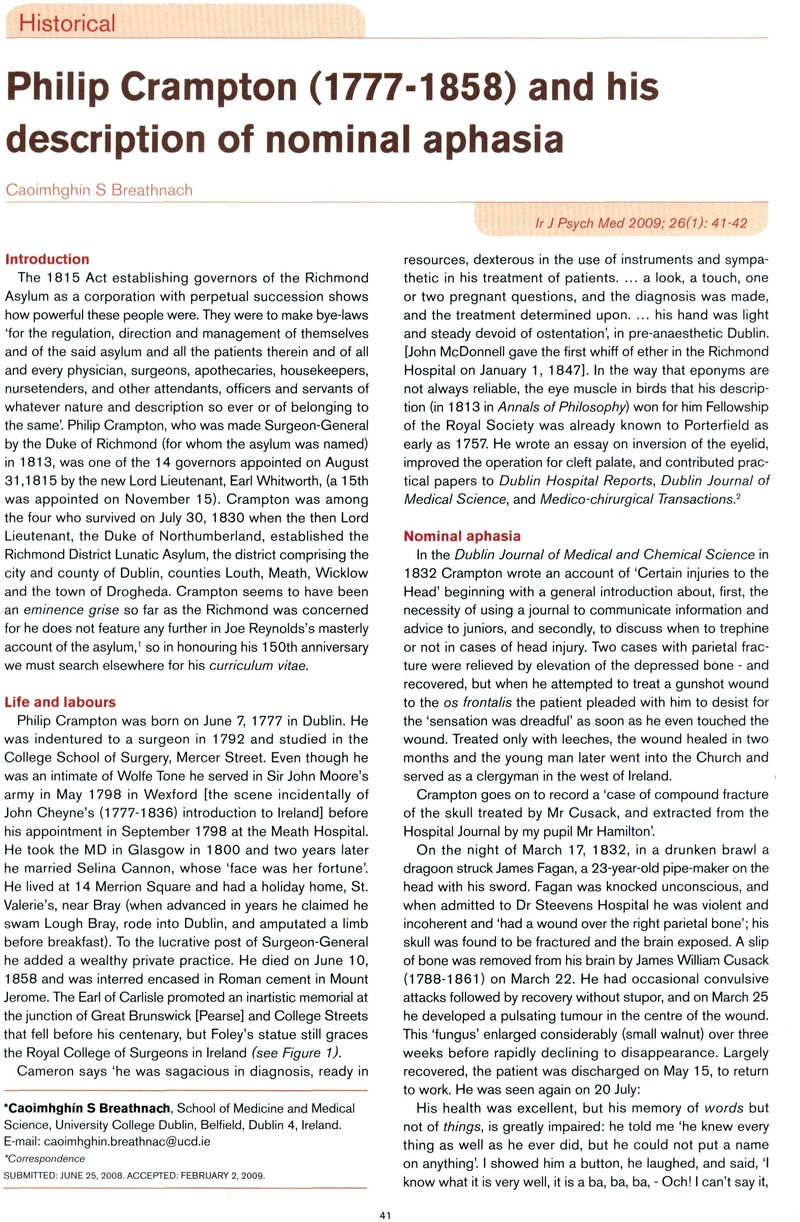Article contents
Philip Crampton (1777–1858) and his description of nominal aphasia
Published online by Cambridge University Press: 13 June 2014
Abstract

- Type
- Historical
- Information
- Copyright
- Copyright © Cambridge University Press 2009
References
- 2
- Cited by


